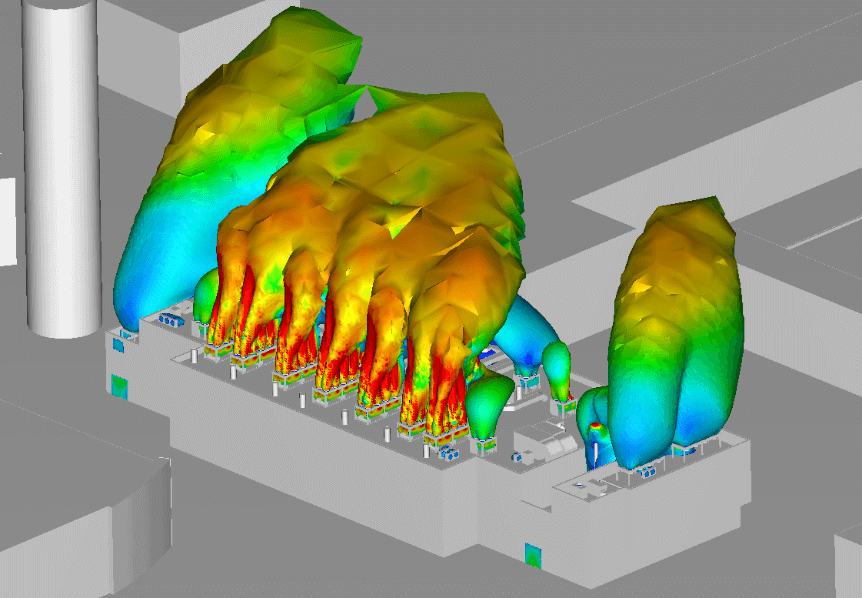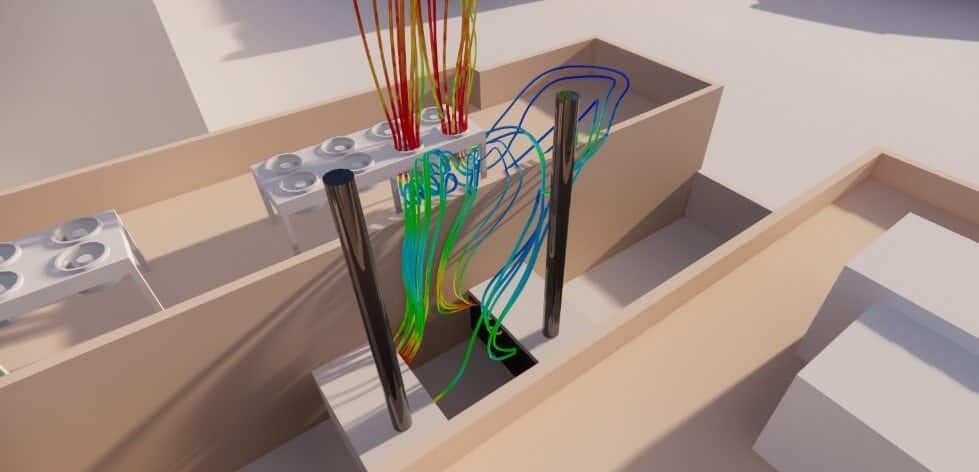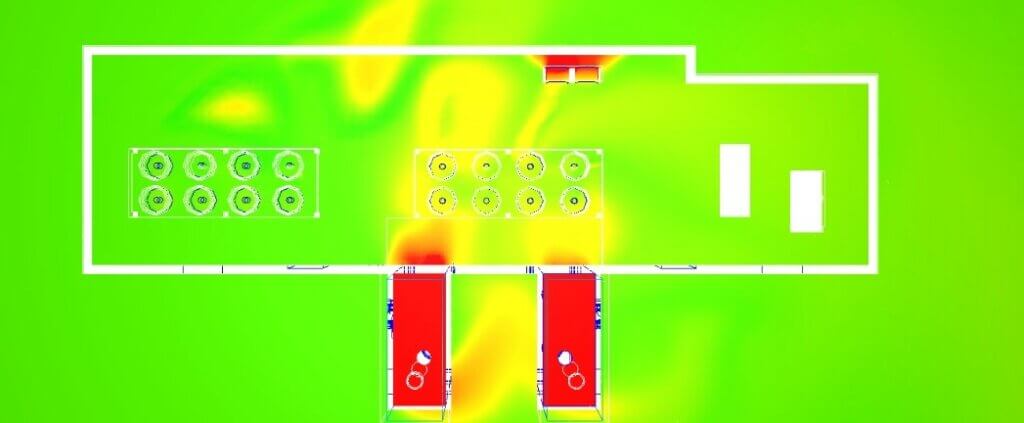Accueil » Data Center » External CFD simulation for data center » DC23 – External
DC23 – External
External study of thermo-aeraulic flows in a data center and the impact of generators
EOLIOS Engineering provided an overview of the thermo-aerodynamic conditions of the thermal plume of a data center and its generator set on the air coolers.
Study of thermal plumes
Year
2022
Customer
NC
Location
France
Typology
Data Center
Continue navigation :
Our other projects :
Latest news :
Study of thermal plumes
This project posed several technical challenges during the design and construction phase. One wasthe release of hot air and fumes from the cooling devices and emergency generators. The relatively small space available makes it less obvious that the fresh air flow, the exhaust air and the data center fumes are always separated.
Thus, in CFD modeling the vertical profile of wind speeds is extremely important. It depends mainly on the degree of roughness of the environment, i.e. the tendency of buildings, trees and other obstacles to slow down the wind by opposing its movement. Thus over the entire thickness of the atmospheric boundary layer, the wind speed increases as one moves away from the ground. In our study, to take into account the wind shear we use a methodology similar to a physical wind tunnel by considering the urban environment for a 500m periphery around the study site and by applying a site-dependent velocity profile. This allows us to evaluate the impact of thermal plumes under different wind configurations.
Design by CFD simulation
Identification of thermal recirculations:
The CFD simulation showed that, in this study, there was a loop between the generator set and the air coolers. Indeed, the hot gases released by the generating set are reabsorbed by the air coolers. This is problematic for the operation of these heat exchangers because the air taken in must be in the right temperature range at all times. Improvement solutions have been proposed to prevent any looping and consequently any malfunctioning.
Identifying hot spots
What is the origin of hot spots on data center roofs?
Numerical simulations contribute to a better understanding of thermo-aerodynamic phenomena. The main benefit of CFD is to foresee and verify all eventualities in order to develop relevant technical solutions.
Thanks to EOLIOS’ own calculation servers, models can be simulated in their entirety with great precision.
This makes it possible to simultaneously analyze the impact of numerous phenomena on the external thermo-aerodynamic evolution of the data center.
The study highlighted a number of design faults which have now been rectified.
How did CFD simulation help to optimize these systems?
Numerical simulations contribute to a better understanding of thermo-aerodynamic phenomena. The main benefit of CFD is to foresee and verify all eventualities in order to develop relevant technical solutions.
Thanks to EOLIOS’ own calculation servers, models can be simulated in their entirety with great precision.
This makes it possible to simultaneously analyze the impact of numerous phenomena on the external thermo-aerodynamic evolution of the data center.
The study highlighted a number of design faults which have now been rectified.
Thanks to the study’s conclusions, we were able to propose appropriate solutions to the design teams to resolve these issues.
Using CFD simulation, you can analyze, predict, verify and correct any errors that may occur in your design.
This fast, accurate method saves design time and costs.
What’s more, it guarantees concrete, reliable results.
Integrating CFD into the design phase means calling on experts to ensure that no problems arise in the future.
Continue on this topic
Discover other projects
External & internal CFD – Data Center Hyperscale
CFD Optimization – Data Center
Data Center – DC28 – Internal
Pressure loss study – Generator – Data center
Data Center – PA 22 – External
Technical premises – Data Center
Cooling optimization – Data Center
Data Centers – DC15.1 & DC15.2 – External
Data Center – Paris
Data Center – GAZ NOVEC
CFD-Data Center – Saint Denis
Data center – DC25 – Internal
Data center – DC17 – Internal
Data Center – DC10 – Internal
Data center – DC25 & DC26 – External
Data center – D14 – External
Data center – DC17 – External
DC23 – External





